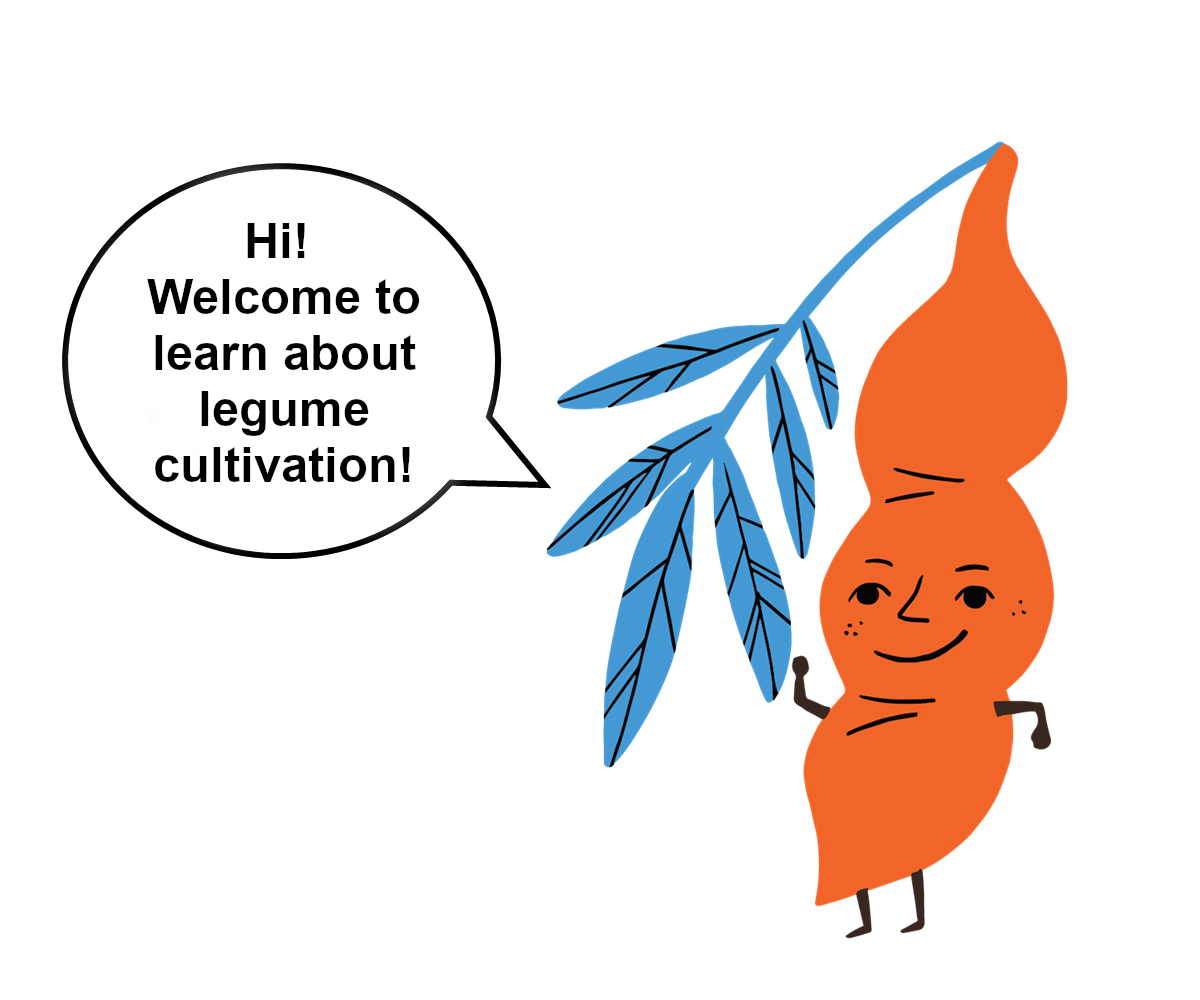
Legumes are superheroes of plant kingdom that fertilize the land, improve soil health and produce protein for human and animal consumption. On this page you can learn more about the benefits of legume cultivation as well as their friends and foes.
Learn more about legumes using the following information cards:
Nitrogen cycle and the benefits of legume cultivation
Crops must be protected from plant diseases, pests and weeds
Crops have numerous friends in nature
What we study in Leg4Life project?
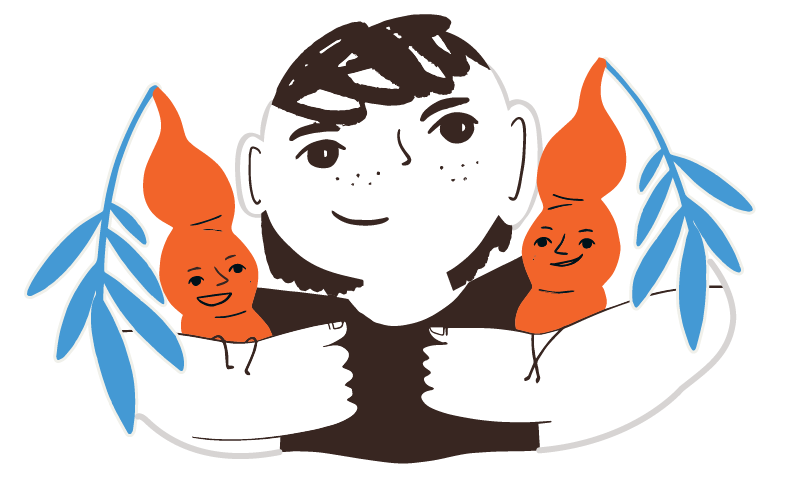
Nitrogen cycle and the benefits of legume cultivation
All living things on earth contain nitrogen. All plants, animals and humans need nitrogen for their growth. Nitrogen is the raw material for protein. Humans get protein from plants and animals, such as meat and milk, but the protein in milk and meat has come from plants that have been eaten by the animals.There is 78% nitrogen in the air, but it is very unreactive, which means that plants cannot utilize it directly. Therefore, plants need help to get nitrogen for their growth. This happens in several ways.
Lightning converts a small amount of atmospheric nitrogen into a form that plants can utilize, but this happens so little that other means are also needed. There are more than 19,000 species of legumes in the world, 99% of which are connected by the ability to bind atmospheric nitrogen to the soil using bacteria living in the root nodules. These Rhizobium nitrogen-fixing bacteria are often found naturally in the soil from which legumes find them and make friendship with them. Rhizobium bacteria live in symbiosis with the legume, the bacteria get carbohydrates from the legume and the bacteria give the legume nitrogen compounds. This is called biological nitrogen fixation and it is free for humans.
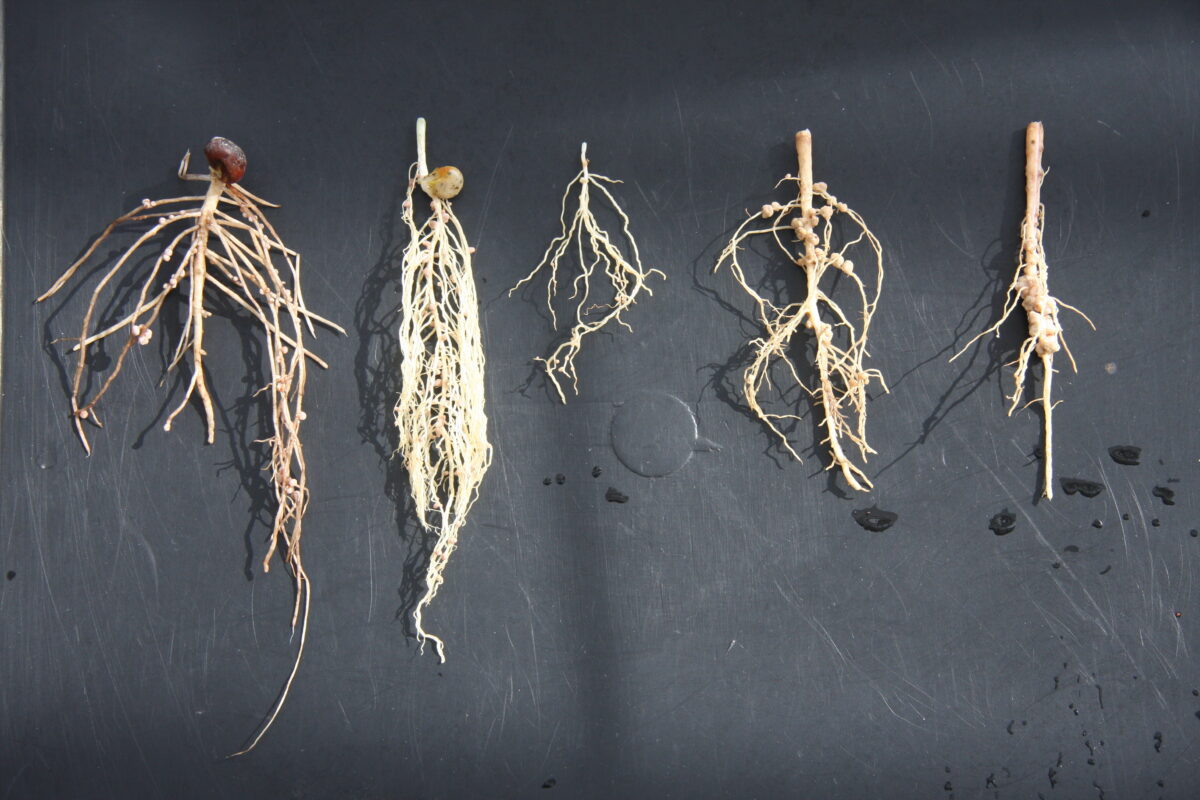
Some of the nitrogen that animals get from plants ends up in manure and urine, through which plants can reuse it. This is how nitrogen circulates on Earth.
Humans have invented a way to fix nitrogen chemically. In this way, industrial nitrogen fertilizers are produced and can be applied as granules to the field. Nevertheless, this is not free, as the production of industrial nitrogen fertilizers consumes a great deal of energy from fossil fuels.
The fruit of legumes is a pod and for many the most familiar legume is the pea. Other legumes grown in Finnish fields are faba bean, blue lupine, clovers and alfalfa. In addition, legumes are abundant in nature, such as boreal vetch and garden lupin, whichis harmfully spread on roadsides. Did you know that licorice and peanuts are also legumes? You can learn more about different types of legumes here.
In the video below, Fred Stoddard, a researcher at the Leg4Life project, talks about legume cultivation and its benefits, as well as friends and foes of legumes.
There are many other benefits to legume cultivation in addition to biological nitrogen fixation. The legumes leave some of their fixed nitrogen in the ground and plants grown after legumes can use it for their growth. Legumes have strong roots that leave cavities in the ground. This loosens the soil, increasing its oxygen content, which many plants like. Legumes increase biodiversity, as pollinators, for example, like the nectar from their flowers. All plants can get diseases in different ways, just like humans. However, legumes have different diseases than many other crops, such as cereals. Legume diseases do not spread to cereals and cereal diseases do not spread to legumes. The cultivation of cereals is so common that they also have a lot of diseases. However, these diseases can be reduced when something else, such as legumes, is grown in the same field.
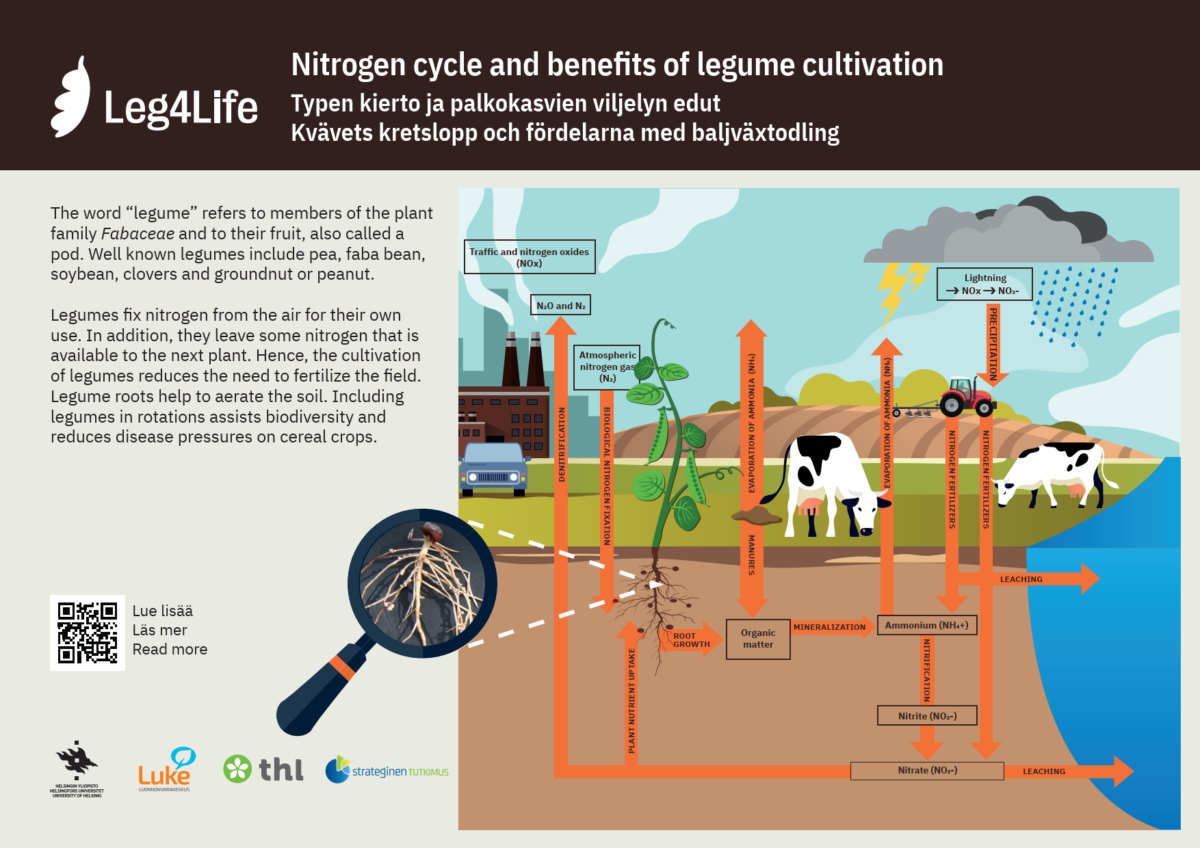
Crops must be protected from plant diseases, pests, and weeds
Plants have different diseases, just like humans. As in humans, plant diseases can be caused by viruses, bacteria and fungi. Plant diseases can be spread through air, water, other diseased plants, soil, tools, and pests.
Plant-eating animals are part of the natural cycle. Farmers hope that the crops they grow will end up being eaten by humans, farm animals or pets, not by pests. Pests are animals, usually insects, that damage plants, impairing their growth and crop quality. Usually it is the larvae that damage plants, but some act also as adults.
Weeds are plants that grow in wrong places. Thus, almost any plant can be a weed if it grows in the wrong place at the wrong time. In fields, weeds are usually species that are difficult to control and that interfere with cultivation, for example, through efficient spreading and repression of the crops.
Crops can be protected from plant diseases, pests, and weeds in many ways. Crop rotation is the main means of protection. Crop rotation means that the crop grown in the same field changes from year to year. For example, hay, cereals and legumes are grown alternately in the field. There are many other benefits to crop rotation. A rotation with many different crops benefits biodiversity. It keeps the soil in good condition and thus increases crop yields. Crop rotation should also be followed in the home garden.
Tillage can eliminate weeds at the seedling stage. At the same time as the main crop, a second crop can be grown in the same field: this is a cover crop. It covers the weeds and suppresses them. It continues to grow after the main crop is harvested. Cover crops prevent erosion and recover nutrients such as nitrogen and phosphorus, preventing them from leaching into the waterways.
If, despite crop rotation, tillage and the cultivation of cover crops, plant diseases, pests, and weeds are present in the field, biological control or plant protection chemicals may be used as a protection against them. Biological control means the control of plant diseases, pests, or weeds by means of other organisms. Biological control usually utilizes a variety of microorganisms or insects. You can read more about these in the information card considering some friends of the crops. In biological control, either beneficial organisms that control diseases, pests, and weeds are added directly to the crop, or their living conditions are improved in the field to support their natural reproduction. Various pheromones can also be used to biologically control pests. Pea moth caterpillars, codling moths of apples and European spruce bark beetles can all be controlled with pheromone traps. The advantage of biological control is that its use does not usually lead to withdrawal periods for crop use or movement in the crop. The weakness of biological control is that it is usually very sensitive to conditions, so the farmer cannot always be sure that the biological control will work.
In chemical control, the plant protection chemical is usually sprayed into the crop in the field, killing weeds and pests or halting the development of diseases. Seed treatment is also used, which means that the seeds sown in the field have been treated with a chemical that stops the growth of certain fungal diseases or pests. The use of plant protection chemicals is strictly regulated. To use them in agriculture, one must purchase and pass a plant protection examination every five years. The aim of the examination is to ensure the plant protection chemicals are used in accordance with guidelines and regulations and thus to minimize their adverse effects on the environment and health.
Plant protection chemicals are relatively little used in Finland. This country had the third-lowest use of plant protection chemicals per hectare of European countries in 2018. At that time, an average of 0.6 kg/ha of plant protection chemicals were used in Finland, whereas the figures were 9.0 kg/ha in Cyprus, 5.1 kg/ha in the Netherlands and 2.9 kg/ha in France. You may read more here and view the latest statistics here.
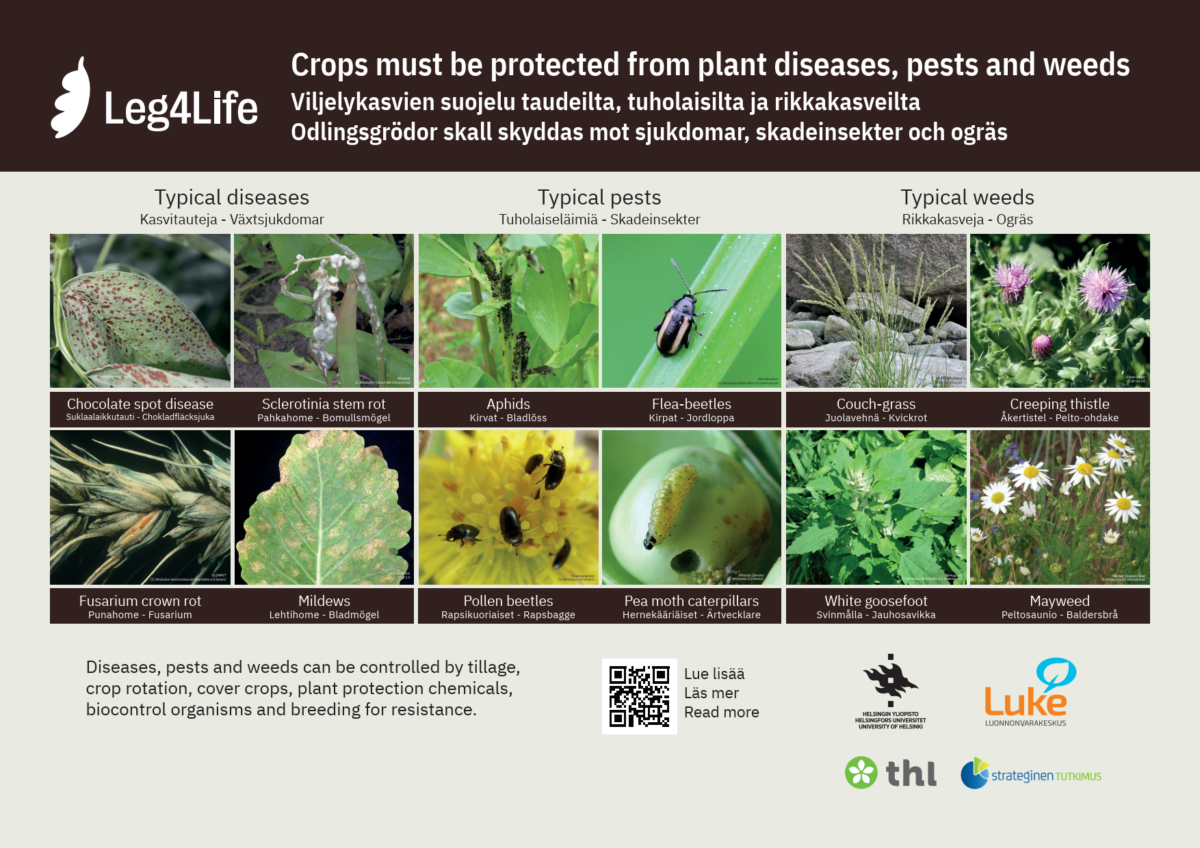
Crops have numerous friends in nature
It is worthwhile for the farmer to take care of biodiversity, as it benefits the fields. Indeed, crops have numerous friends in nature who improve crop yield and quality, control plant diseases and pests, and help plants absorb water and nutrients more efficiently.
Pollinators are insects that gather nectar or pollen from flowers. When gathering either nectar to make honey or pollen to feed the brood, they get covered with pollen that gets transported to the next flower. The vibration of their activity can also shake pollen onto the stigma. When they transport pollen from one plant to another, it results in cross-pollination, which many species need. Large, fragrant, and colorful flowers are particularly effective in attracting pollinators. Most plants benefit from pollinating insects. Blueberries and lingonberries do not produce any berries without pollinators. Strawberry, apple, currants, and raspberry can self-pollinate without insects, but produce more fruit when cross-pollinated. Strawberries taste better thanks to pollinators, as cross-pollination increases their sugar content. The best pollinators are bumblebees, honeybees, butterflies, moths and hoverflies. Certain other flies and beetles pollinate some flowers and in other climates, certain birds and bats are active pollinators. You can do your own act for pollinators, for example, by planting pollinator-friendly plants, building an insect hotel, and leaving part of your lawn uncut. See more tips for good acts for pollinators here. You can also test your knowledge of pollinators here – what do we lose if we lose pollinators?
Plant-protecting insects are either predators or parasites. Predatory insects eat adult, larvae or eggs of pests. Parasites, in turn, lay eggs either on pests or on the food plants pests use, and thus reduce the viability of the pests. There are many insects that protect plants in nature. Some of them can be specially grown to control pests. For example, ladybugs, aphid midges and lace wings eat aphids. Parasitic wasps are utilized to destroy aphids and white flies. Predatory mites eat thrips, white flies, red spider mites, cyclamen mites, and dark-winged fungus gnats. You may read more about the useful and harmful bugs living in Finland here.
Useful microbes include many species of fungi, archaea and bacteria. Rhizobium nitrogen-fixing bacteria live in symbiosis with legumes and form root nodules in their roots. Biological nitrogen fixation in legumes is done by Rhizobium bacteria. Bacteria of the genus Pseudomonas contain both beneficial and harmful species. Many soil Pseudomonas bacteria are beneficial to plants because they help plants absorb nutrients, promote plant growth, and prevent the spread of pests and plant diseases. Gliocladium fungus can be used to control plant diseases. In soil, it prevents harmful microbes from entering the plant roots and impairs the growth of pathogens, for example, by growing mycelium around them and producing enzymes that are harmful to microbes. Gliocladium fungus and honeybees can also be used to control gray mold on strawberries. The mycelium and spores of the Gliocladium fungus are placed in beehives and the bees spread it on strawberries as they collect nectar from them. Mycorrhizal fungi form symbioses with plant roots, improving the plant’s water and (especially) nutrient intake from the soil, while the fungi get carbohydrates from the plant that they cannot produce themselves. Nearly 90% of plant species can form a mycorrhizal association. It is not necessary for all species, but most plants clearly benefit from it.
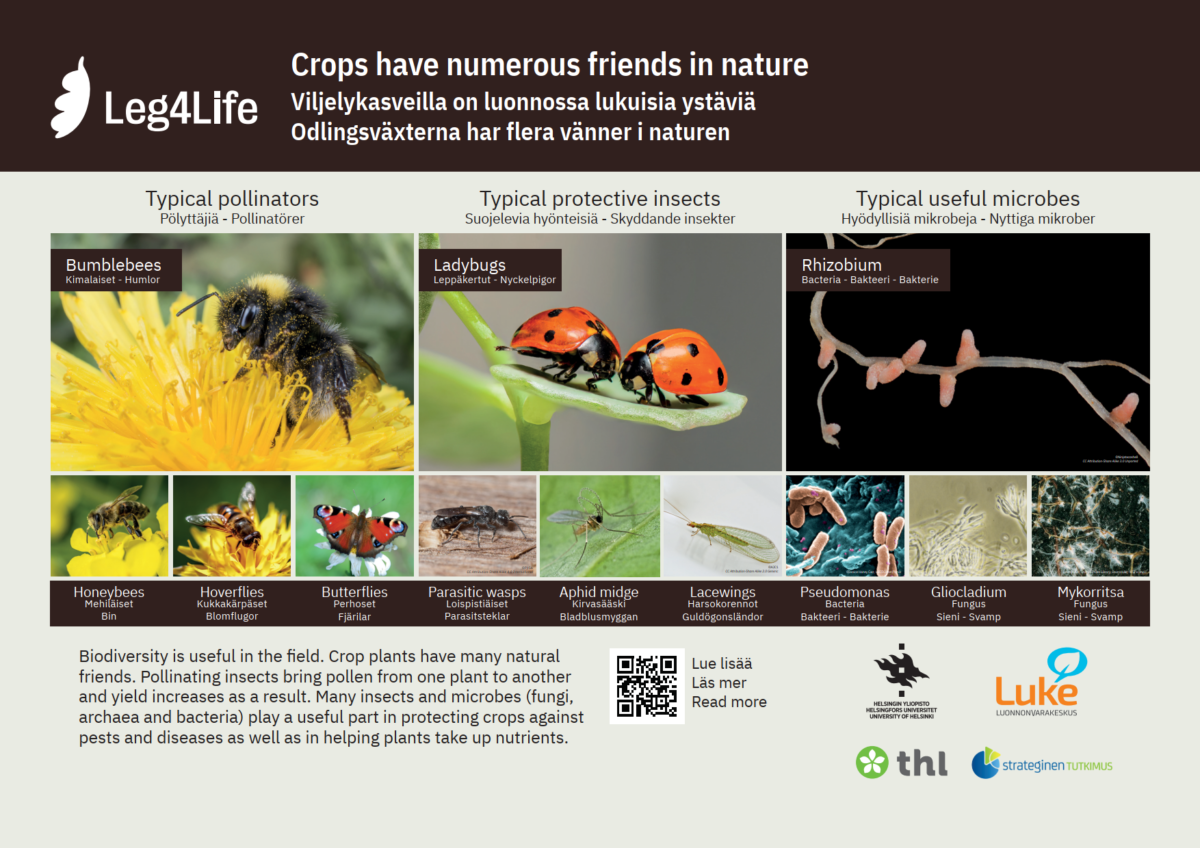
What do we study in Leg4Life project?
The Leg4Life project studies legumes growing in Finland, i.e., pea, faba bean and clovers. The Leg4Life project involves more than 50 researchers who use their research to find answers to many questions:
- What are best practices for growing legumes in the field? What other crops could be in the same crop rotation with legumes?
- How can legumes be used to produce food for humans and feed for animals? How does consuming legumes affect animals and humans?
- Would people be healthier if they ate more legumes and less meat?
- How to get people eat more legumes?
- Would there be environmental benefits if legume cultivation and consumption increases?
The Leg4Life project researches legume cultivation at the Haltiala farm in Helsinki. You may visit the field test area of the Leg4Life project and learn about the legume research in Haltiala (map link). Several information signs about the cultivation of legumes have been placed in the vicinity of the test area. In addition, in the demonstration plots outside the fenced test area, you can get acquainted with the plant species to be studied in the field, which are pea, faba bean, oat, wheat, rapeseed and ryegrass.
We warmly welcome visitors interested in legumes to the Haltiala test area. However, we remind you not to go inside the fenced area and not to touch the plants there. Only designated personnel of the Leg4Life project are allowed inside the fence. Thank you for your cooperation!
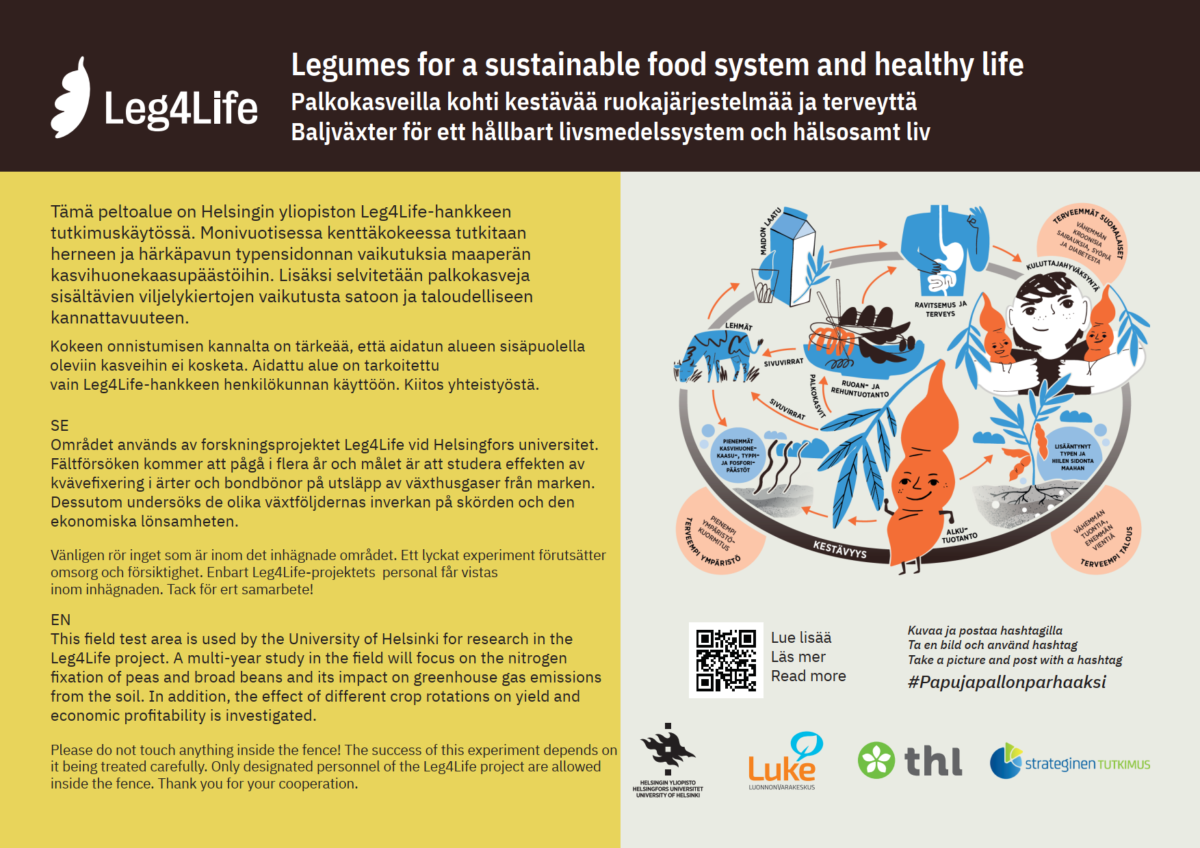
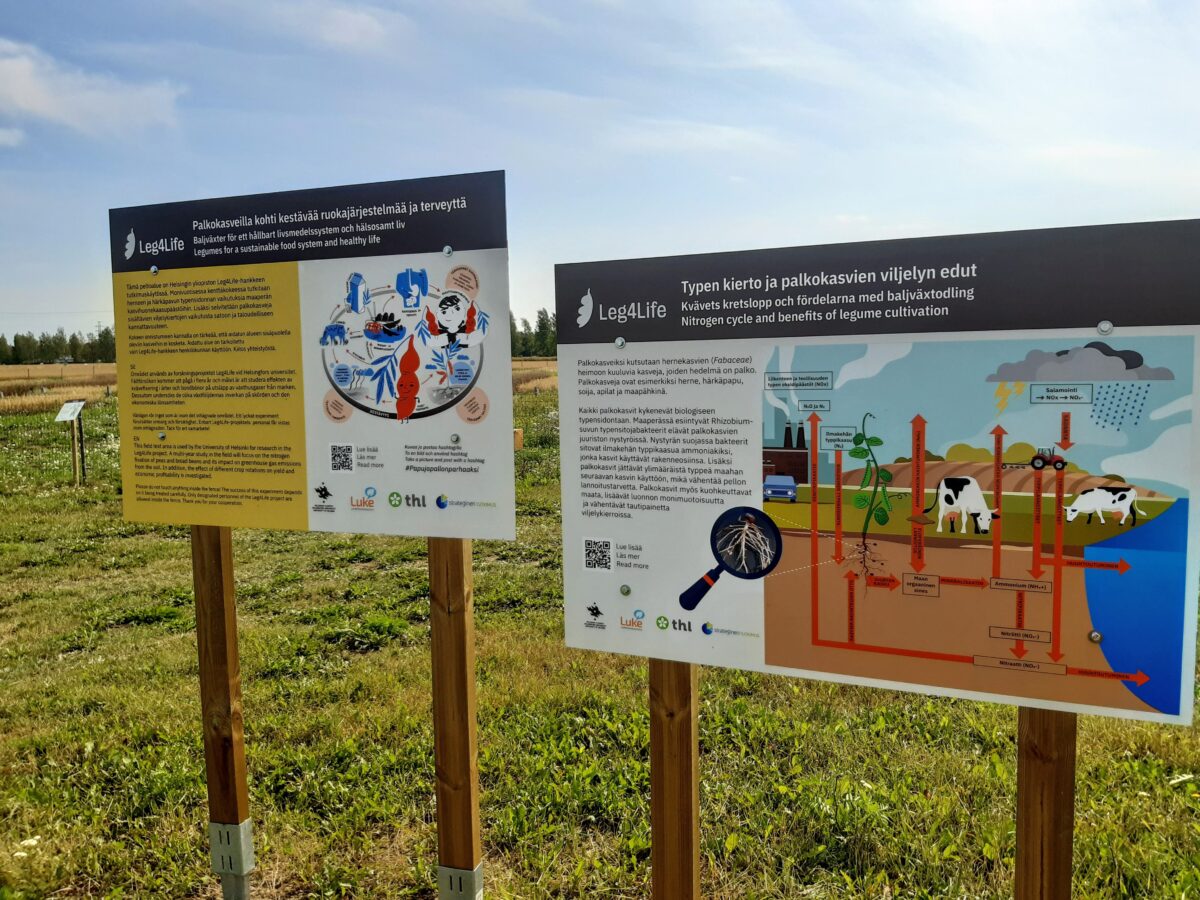
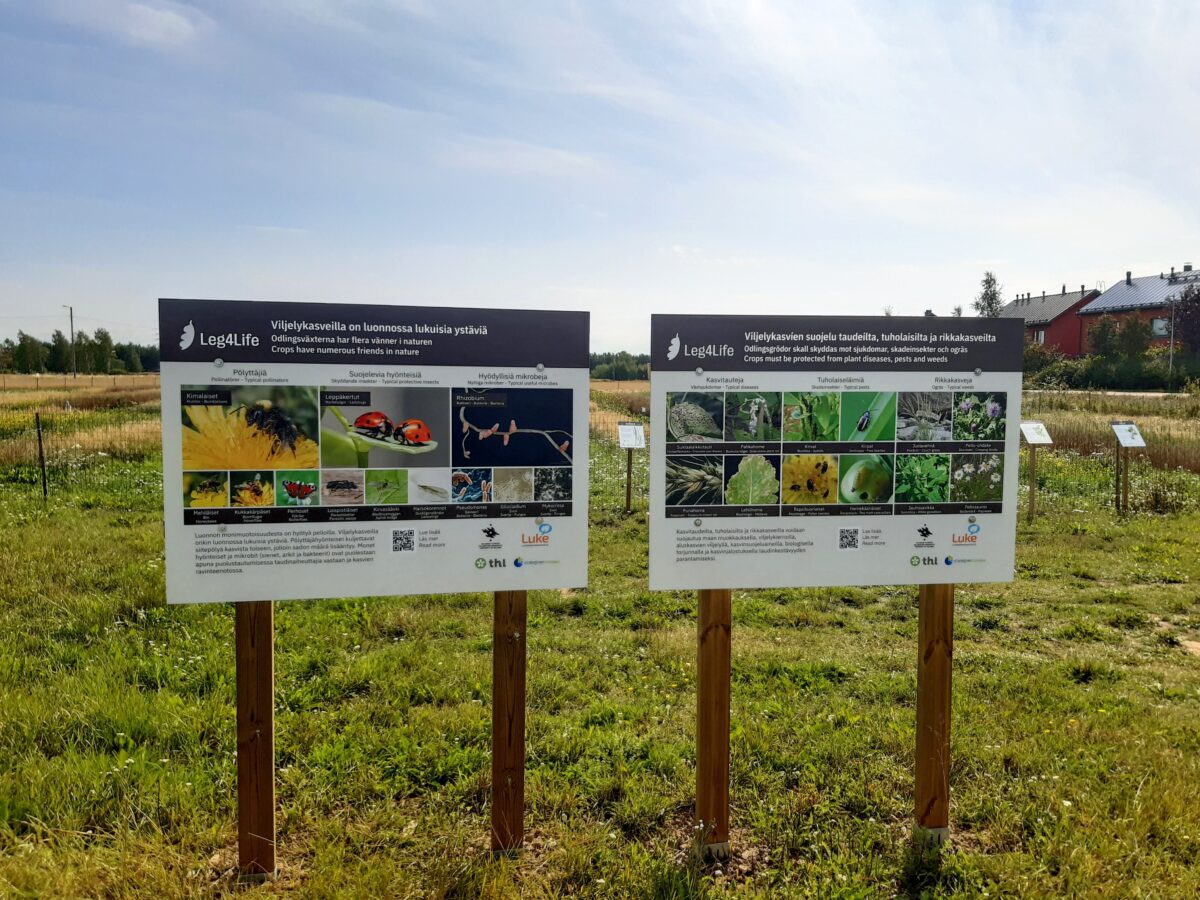
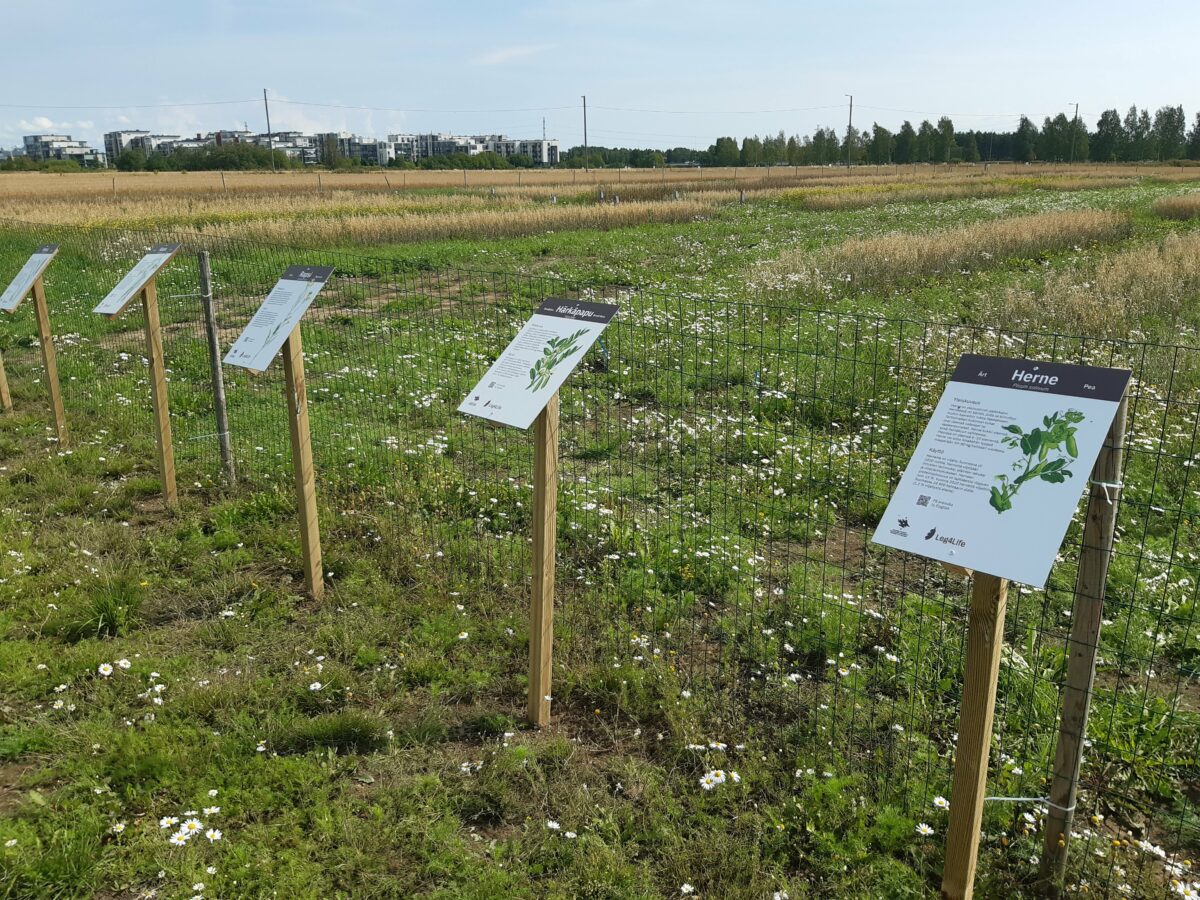
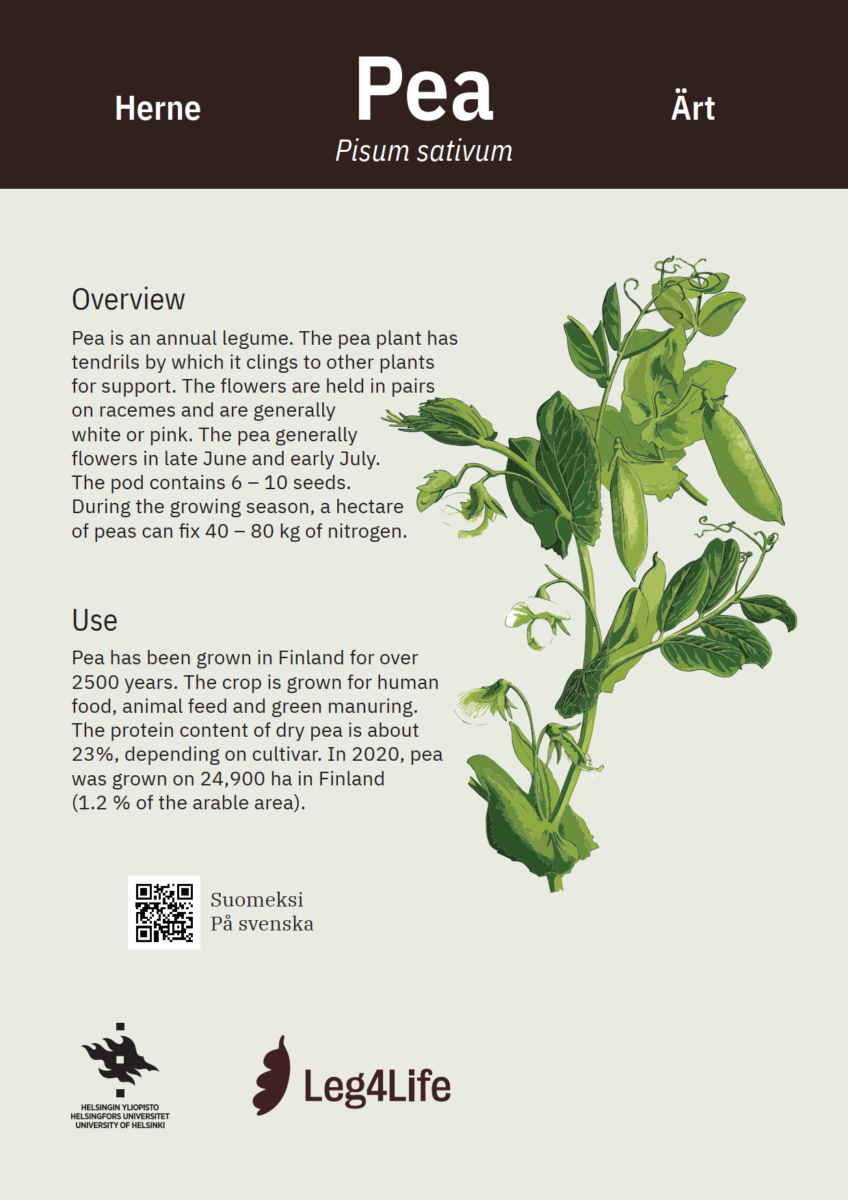
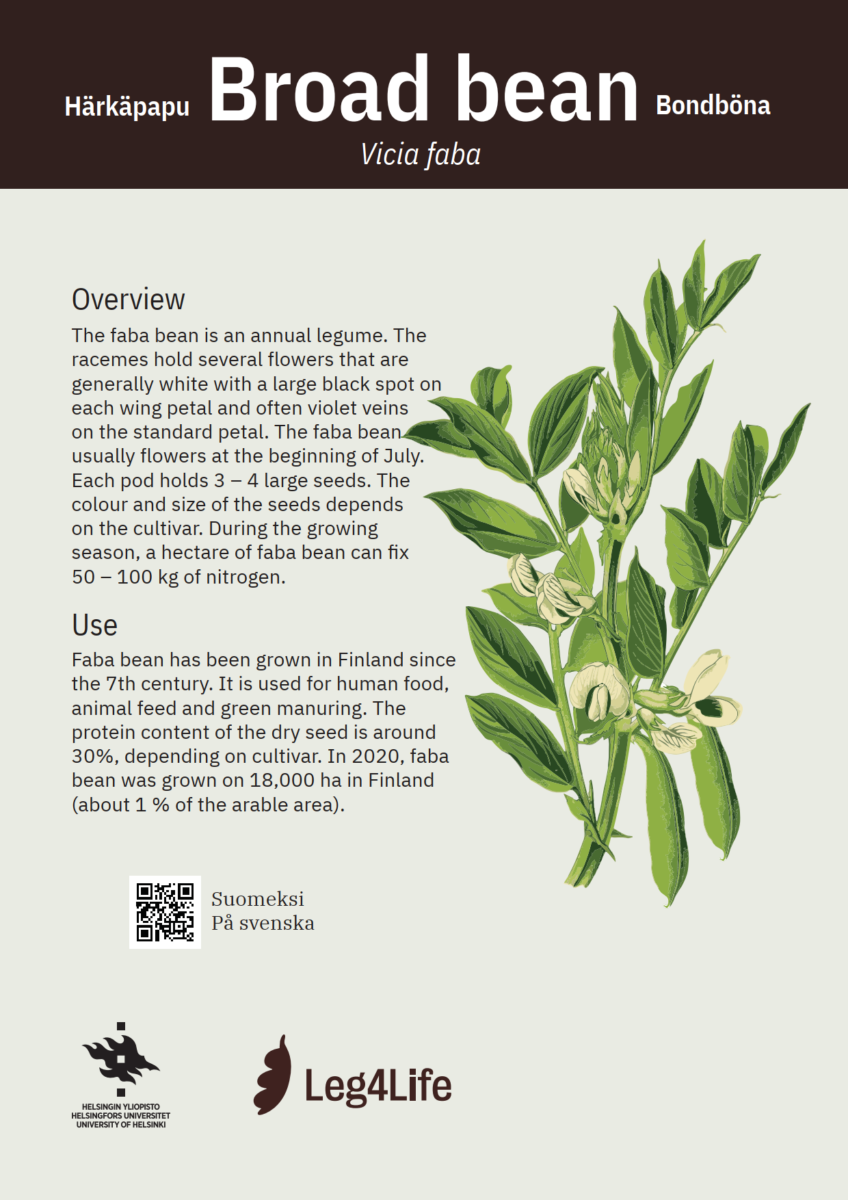
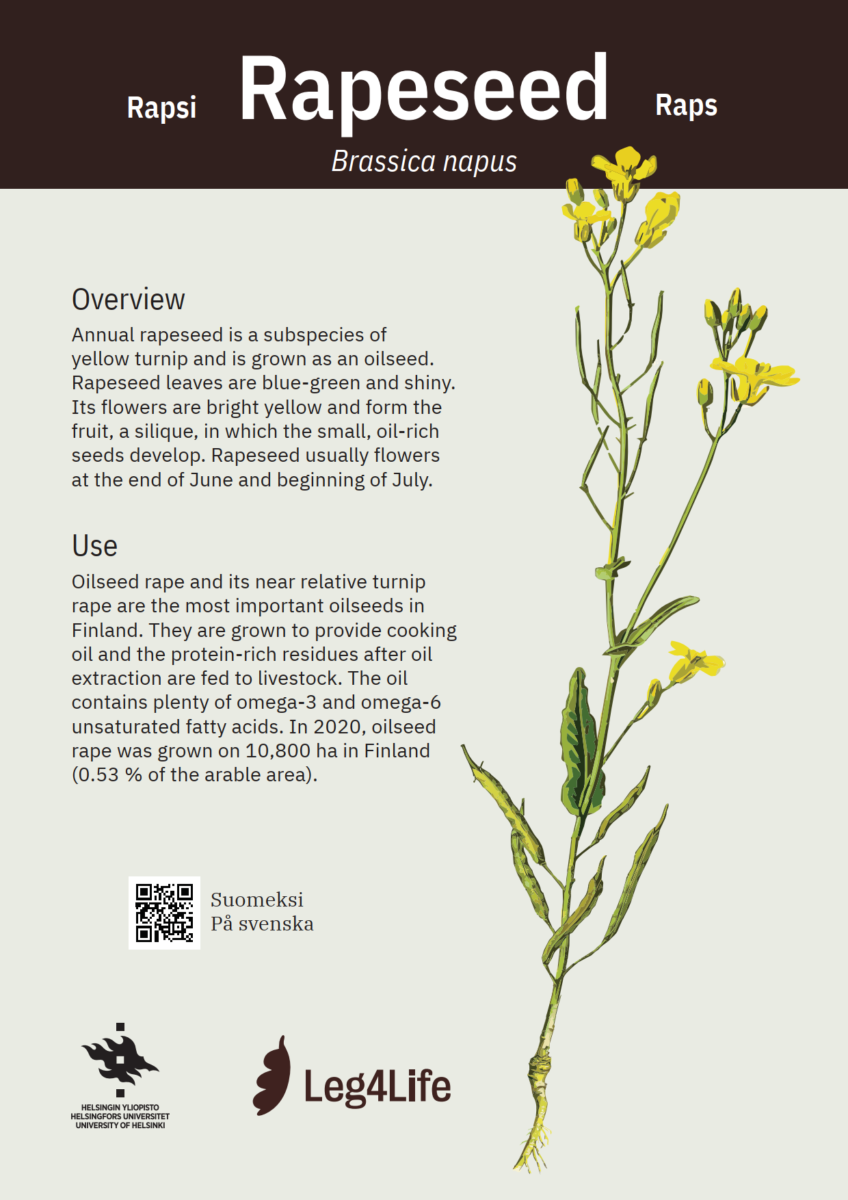
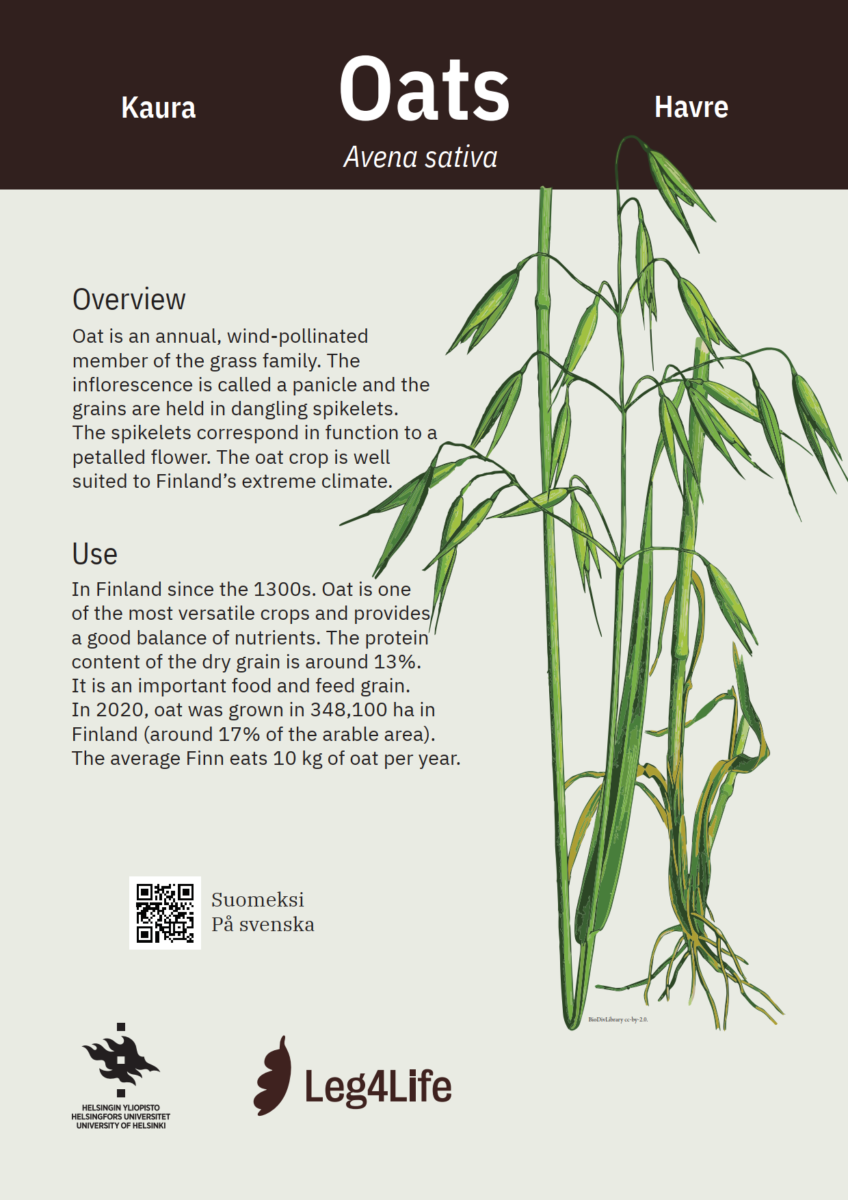
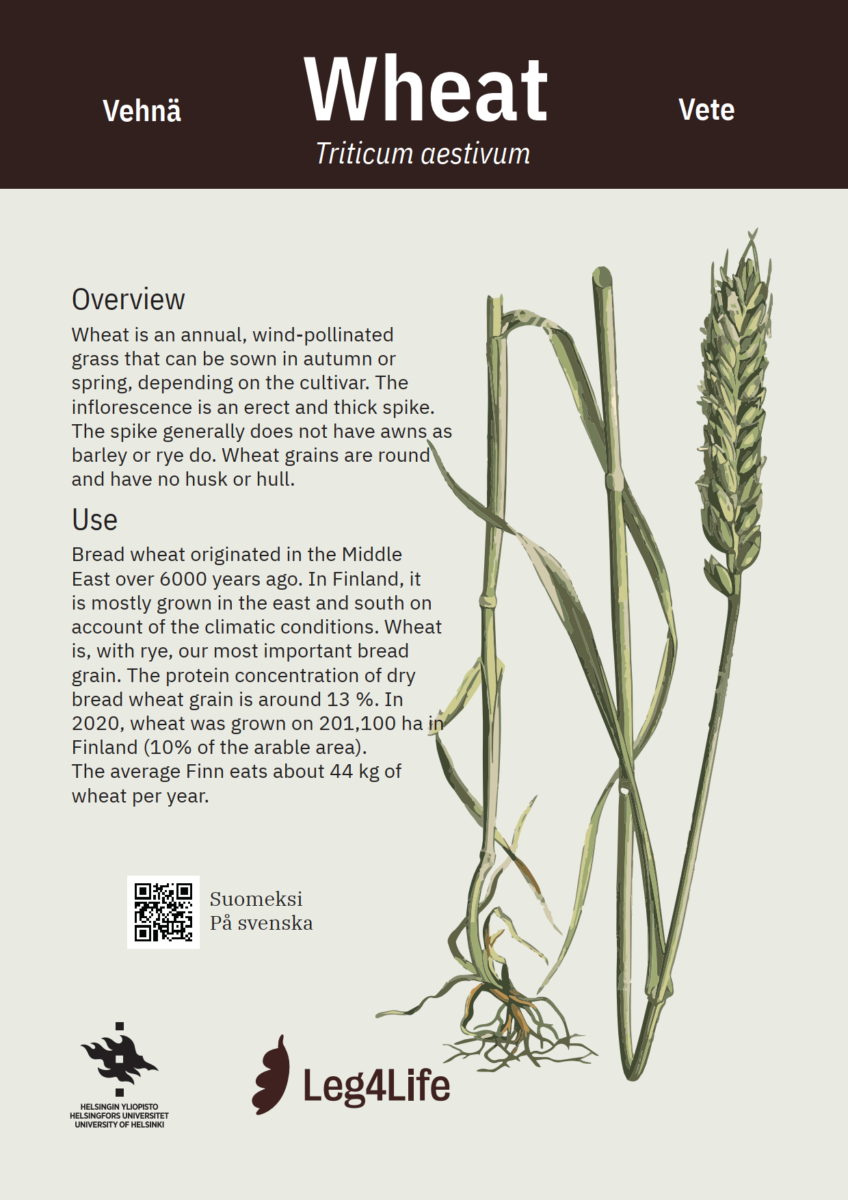
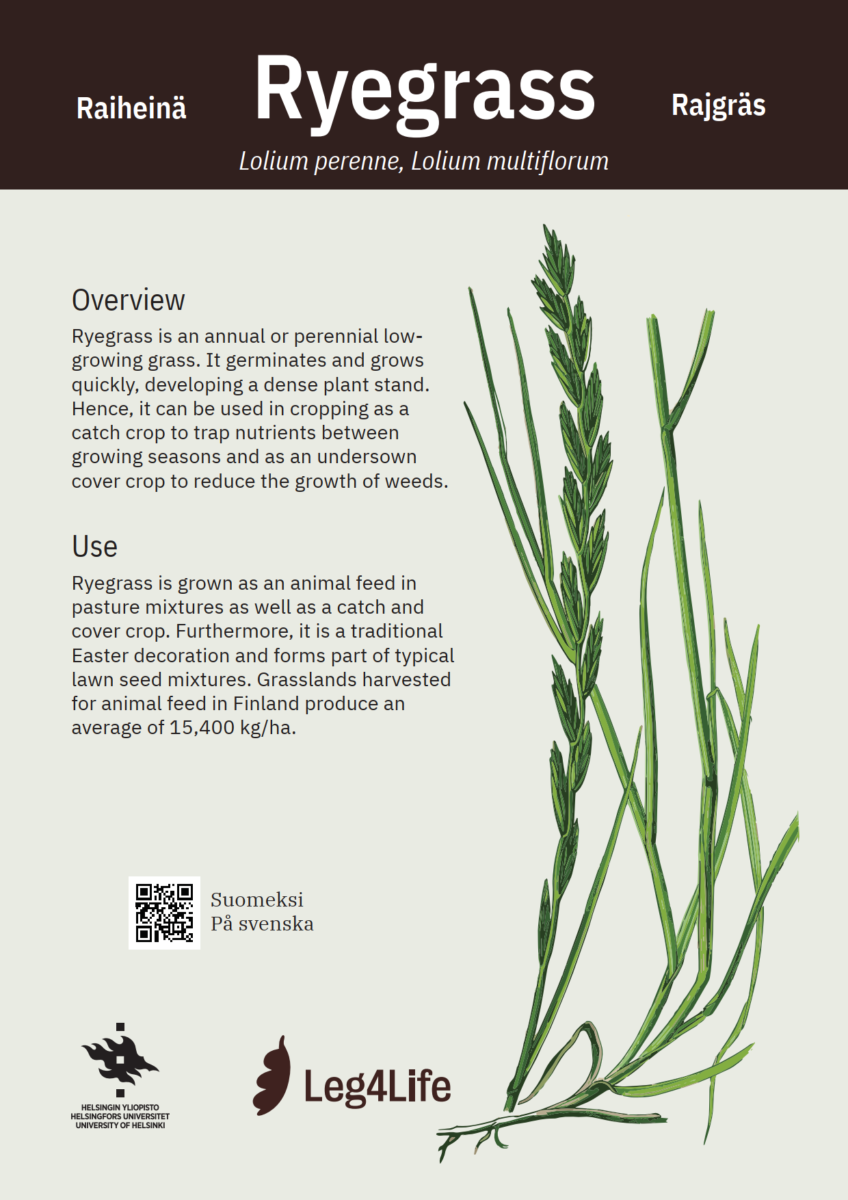
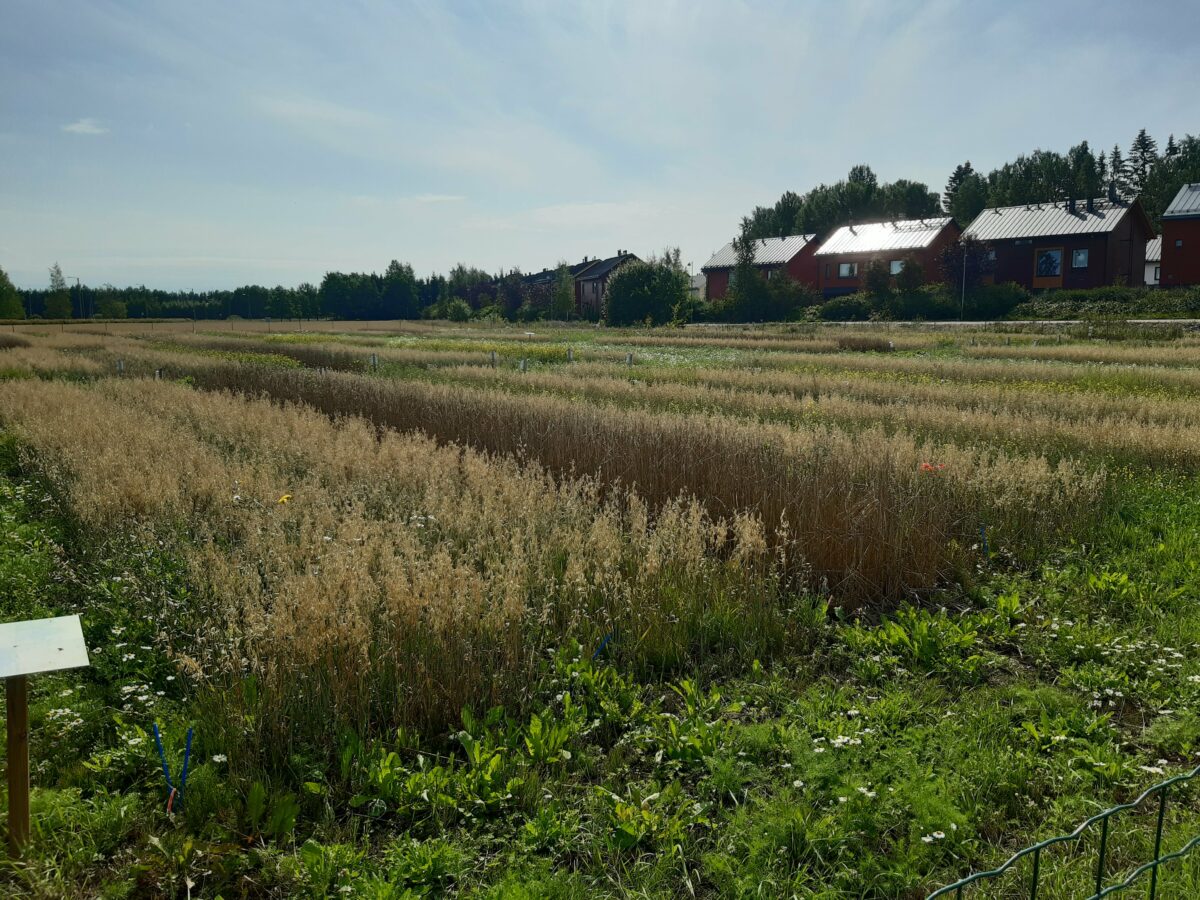
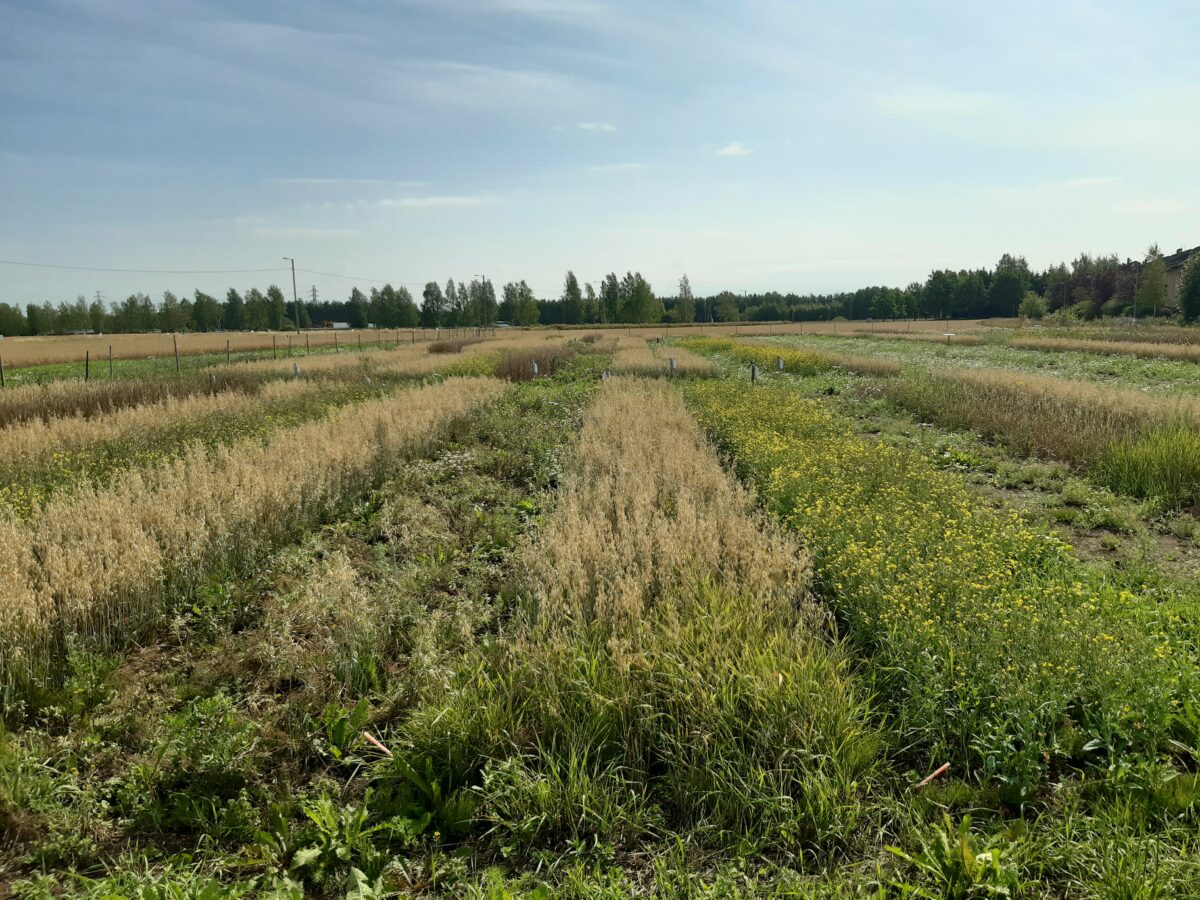
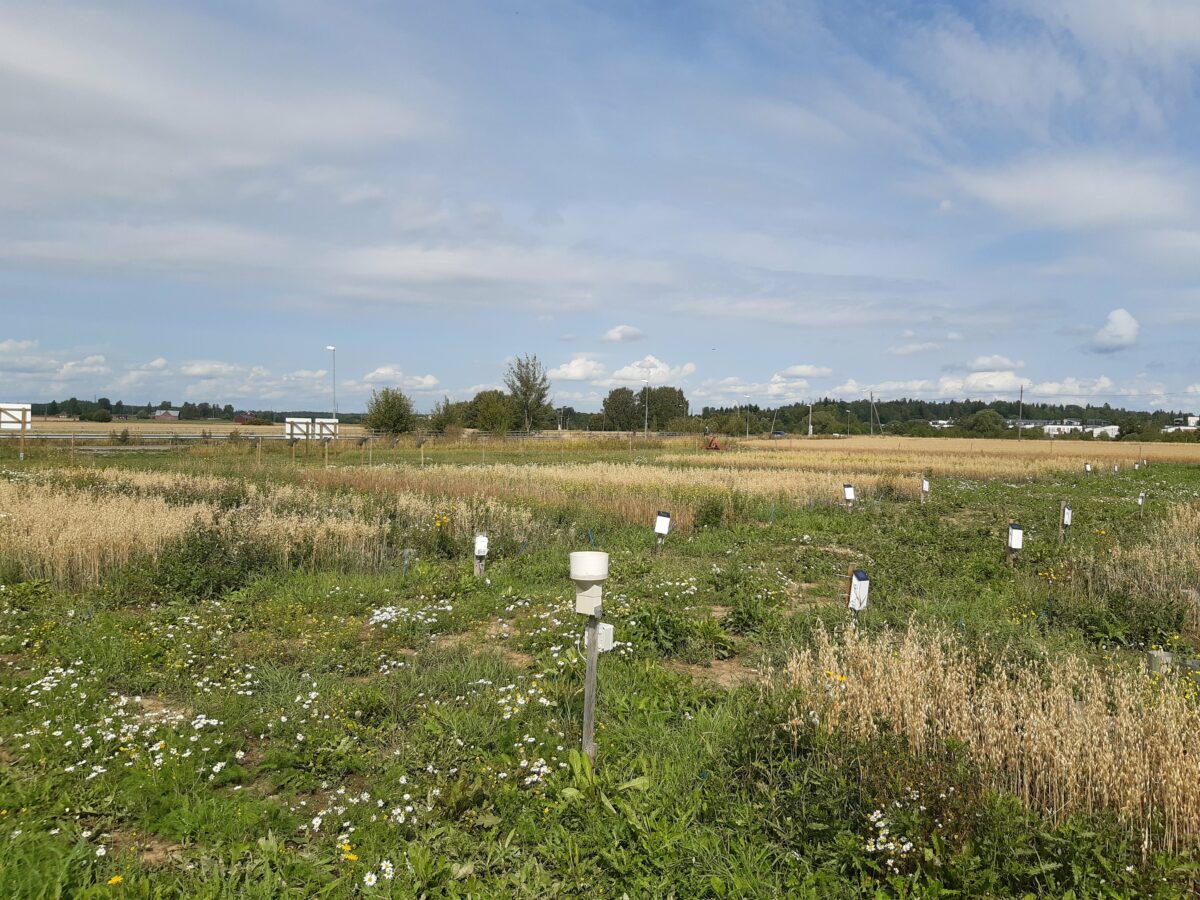
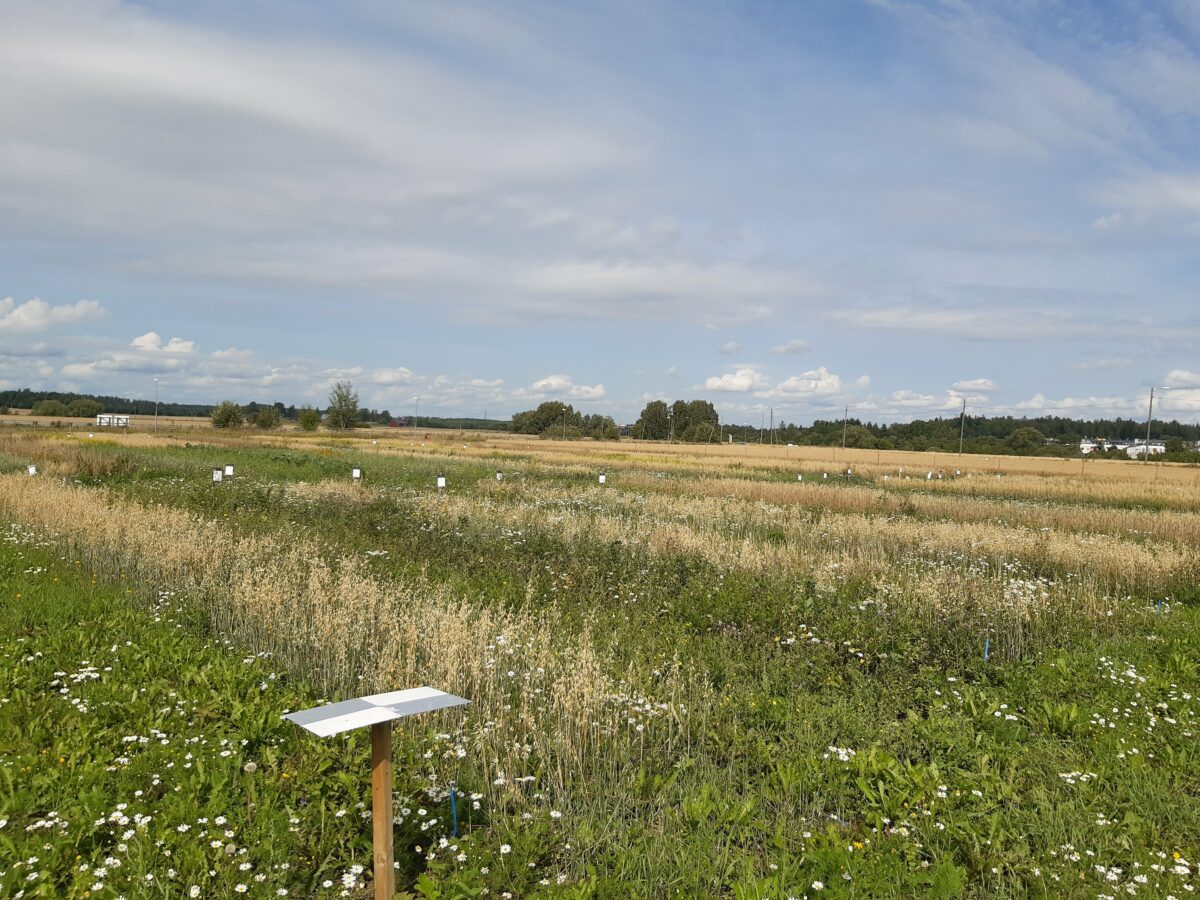
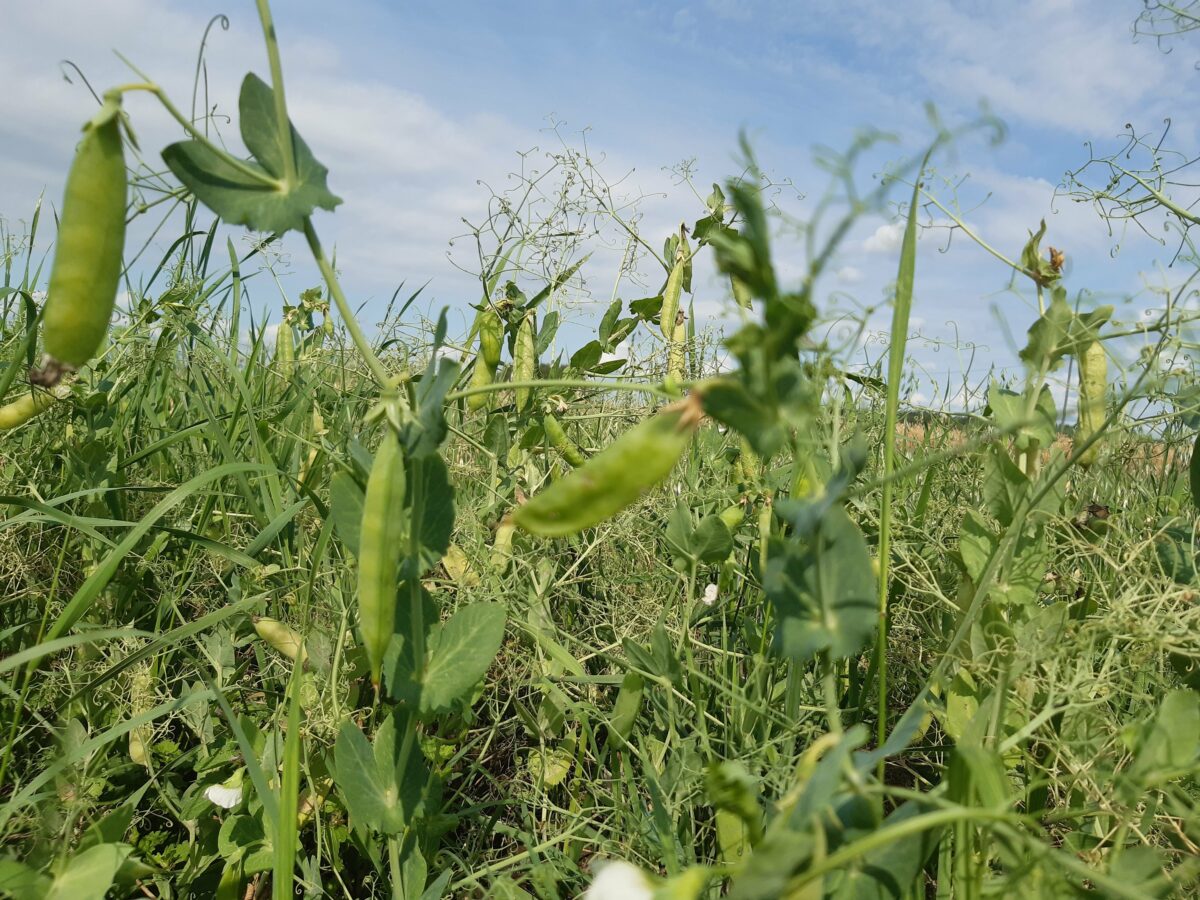
Project partners



Funded by

